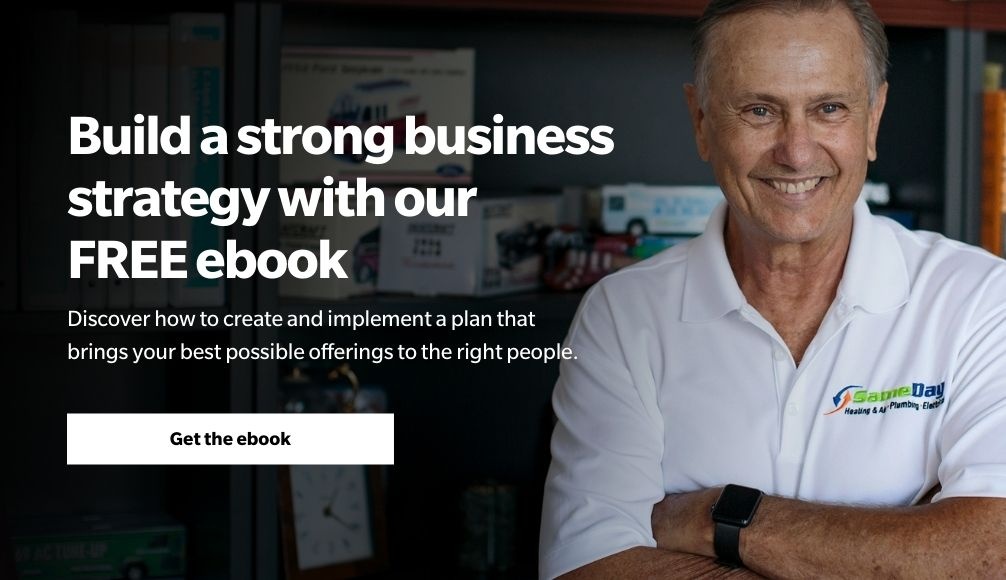What’s more important to you? A one-time purchase, or a customer with a long-term relationship with your business? Customers-for-life is the strategy and the hope behind all great brands.
Certainly, such loyalty is supported by having a differentiated story—the why behind the brand. But what drives lead conversion and that long-term relationship is carefully considering your prospect's experiences through every step of the sales process.
Two common prospect experiences
Let’s consider these two common experiences.
You’re thinking about buying a new car. Your current one is aging and beginning to require more frequent repairs. You may have a need, but not a burning desire. If you see the right car, at the right price, who knows? Maybe you'll buy it today.
So you visit the first dealership. You zero in on a particular model. A salesperson latches onto you and he begins the grinding process of trying to move you towards a sale. You have the feeling that you’d like to just get out of there. The salesperson attempts some typical ‘turning up the pressure’ tricks. You succumb a bit, but finally walk away with the salesperson failing to even put a business card in your hand.
Somewhat scarred, but still interested in these beautiful cars glimmering in the showroom, you head towards the next dealership. You’re immediately greeted by a smiling showroom coordinator who offers you a cup of coffee or something to eat. He invites you to look around and let him know when you’re ready to speak with someone who can provide more information. He doesn't say one word about purchasing a car.
You stroll around the well-lit, spacious showroom, studying the various vehicles. You’re relaxed. There's no salesperson in tow watching your every reaction. You sip your coffee, and set it down on the little bar-like table provided near the cars, so you can open the door and slip in behind the driver’s seat without worrying about the coffee cup. You notice plenty of those slick multi-colored brochures on a stand near each table.
Everything about the second experience says: “we care about you as a prospective customer, we’re here when you’re ready, and there’s no pressure whatsoever.”
As you engage with the sales person, you begin to feel increasingly comfortable as he asks a series of questions to better understand your needs. You feel as if you’re in the right place. Gradually, you begin to sense the sale person is on your side. He offers information, advice and reassurance that you're making the right decision; all in a very connected, caring manner that feels both warm and professional. When you tell the sales person that you want to bring your wife back to look at the car, you get the same demeanor; no sense of pressure whatsoever. He kindly asks if you'd like to make an appointment. You agree as the emotional attachment to owning a new car is now very strong. You leave excited. You can’t wait to bring your wife back to see the beauty you've picked out, and to meet Carl, your new car dealer.
Lead Conversion, not sales
At EMyth, we call sales “Lead Conversion.” It’s more than just a semantic change—it suggests a complete change in mindset about the concept. The basics of lead conversion are simple: design a process, follow the steps, and forget about making the sale. Create a powerful customer experience that supports a message that runs consistently from your lead generation through conversion that focuses on the prospect’s needs—not yours.
Prospects who are treated royally during the sales process turn into customers who often become loyal advocates and will refer others to your business.
Here are the essential ingredients to create a lead conversion process that will increase your sales and lead to long-term customers:
- Analyze your prospect’s experience from their first awareness through initial engagement with a salesperson. Orchestrate the experience based on your understanding of their needs. Create a process to ensure that the same experience happens every time with every prospect. There should be no reason for miss-steps here because this experience should be based on a clear understanding of your prospect’s relevant expectations and how your brand promise addresses it.
- Engage with your prospects. Get to know them; show interest in them; demonstrate that you care and sincerely want to satisfy their needs – not yours.
- Determine your customer’s true needs. Using cars again as an example, find out if the BMW you’re offering appeals to their need for the ultimate high-performance driving machine, or perhaps they simply think it’s sexy or shows that they’ve made it. The better you are at surfacing the true underlying emotional component of the buyer, the easier the conversion is.
- Help the customer make the purchase decision without overloading them with more than what they need to do so. They may need further information or understanding, assistance in clarifying their needs, advice, or reassurance. Learn to zero in on what each customer’s needs are and carefully guide them so they feel supported in making their decision, not pressured.
- Once the customer agrees, make the transaction part of the experience aligned with your promise and brand. Make it easy, and they will not pull back.
Treat prospects like valued customers
It’s truly this simple. If you want more customers to grow into relationships that lead to ongoing sales, referrals and raving fans, treat your prospects as if they are already your most valuable customer.
If you build processes that discover their true needs, and take the time to support your potential customers in learning what they need to know about your offering, you will create customers that come back again and will happily tell everyone about how they were treated like royalty from the moment they entered through your door.




Comments